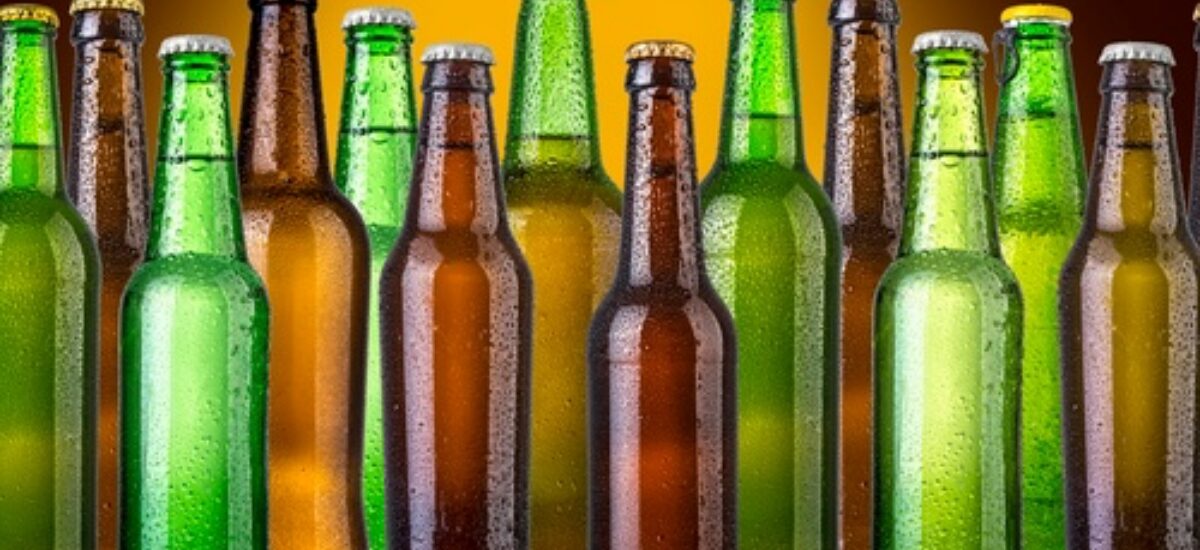The global demand for beer bottles is poised for significant growth, with a projected compound annual growth rate (CAGR) of 4.2% during the forecast period. The beer bottle market size, valued at approximately USD 815.42 million in 2022, is anticipated to surpass USD 1,230.43 million by 2032.
Recent insights reveal that glass packaging technology is expected to dominate the beer bottles market due to its numerous advantages. Notably, glass bottles are reusable and can keep beer fresher for longer compared to alternative packaging materials.
One of the standout features of returnable glass bottles is their ability to prevent light from entering, which minimizes the risk of “skunking” the beer. This characteristic makes glass a viable and preferred packaging choice for breweries. Additionally, glass packaging offers a genuine aesthetic appeal, catering to diverse consumer preferences while ensuring no chemical reactions occur that could spoil the beer’s quality.
See All the Details—Click Here for Full Report Information!
Prominent Drivers of the Beer Bottles Market
- Increasing Craft Beer Popularity: The rising trend of craft breweries has led to an increased demand for unique and specialized beer bottles. Consumers are increasingly seeking diverse flavors and unique packaging, driving innovation in bottle designs and materials.
- Sustainability and Eco-Friendly Packaging: As environmental awareness grows, many breweries are focusing on sustainable packaging solutions. Recyclable and biodegradable beer bottles are becoming more popular, prompting manufacturers to invest in eco-friendly materials and practices.
- Growing Consumption of Alcoholic Beverages: The overall increase in alcohol consumption, particularly in emerging markets, is driving the demand for beer. As disposable incomes rise, consumers are willing to spend more on premium beer products, further fueling the need for bottles.
- E-commerce Growth: The expansion of online shopping platforms for alcoholic beverages has increased the demand for beer bottles. Convenient home delivery and a broader selection of products encourage consumers to purchase beer online, leading to higher bottle sales.
- Innovative Packaging Designs: Manufacturers are investing in innovative bottle designs to differentiate their products in a competitive market. Unique shapes, sizes, and artistic labels attract consumers, making them more likely to purchase specific brands or types of beer.
Challenges Faced by the Beer Bottles Market
- Sustainability and Environmental Concerns: As consumers become more environmentally conscious, there is increasing pressure on beer manufacturers to adopt sustainable practices. This includes the use of recyclable or biodegradable materials and reducing carbon footprints. Companies that fail to meet these expectations may face backlash and lose market share.
- Rising Raw Material Costs: Fluctuations in the prices of raw materials used for manufacturing beer bottles, such as glass, aluminum, and plastics, can significantly impact production costs. These increases can be due to supply chain disruptions, regulatory changes, or global market trends, making it challenging for manufacturers to maintain profitability.
- Changing Consumer Preferences: The shift towards craft beers, canned beverages, and alternative packaging (like kegs or biodegradable options) poses a challenge for traditional beer bottle markets. Companies need to adapt their offerings to align with evolving consumer tastes and preferences.
- Regulatory Compliance: The beer industry is heavily regulated, and compliance with local, national, and international laws can be complex and costly. Regulations regarding labeling, packaging materials, and safety standards can create hurdles for manufacturers, especially smaller breweries.
- Competition from Alternative Packaging: The increasing popularity of cans and alternative packaging methods (like PET bottles) is a significant challenge for the glass beer bottle market. Cans are often seen as more portable, lightweight, and recyclable, which can attract consumers looking for convenience and sustainability.
Beer Bottles Market: Key Players
Examples of some of the key players operating in the global beer bottles market are:
- Owens-Illinois, Inc.
- Ardagh Group SA
- Vidrala SA
- Consol Glass (Pty) Ltd.
- Central Glass Co., Ltd.
- Nampak Ltd.
- Amcor Limited
- Piramal Glass Private Limited.
- ACE Glass Containers Ltd.
- Verallia
Beer Bottles Market: Segmentation
By material:
- Glass
- Clear Glass
- Amber Glass
- Green Glass
- Plastic
By capacity:
- Less than 350 ml
- 350 – 500 ml
- 500 – 1000 ml
- More than 1000 ml
Regional Analysis Includes
- North America
- Latin America
- Western Europe
- Eastern Europe
- Asia Pacific excluding Japan (APEJ)
- Middle East & Africa (MEA)
- Japan
About Future Market Insights (FMI)
Future Market Insights, Inc. (ESOMAR certified, recipient of the Stevie Award, and a member of the Greater New York Chamber of Commerce) offers profound insights into the driving factors that are boosting demand in the market. FMI stands as the leading global provider of market intelligence, advisory services, consulting, and events for the Packaging, Food and Beverage, Consumer Technology, Healthcare, Industrial, and Chemicals markets. With a vast team of over 400 analysts worldwide, FMI provides global, regional, and local expertise on diverse domains and industry trends across more than 110 countries.
Contact Us:
Future Market Insights Inc.
Christiana Corporate, 200 Continental Drive,
Suite 401, Newark, Delaware – 19713, USA
T: +1-347-918-3531
For Sales Enquiries: sales@futuremarketinsights.com
Website: https://www.futuremarketinsights.com
LinkedIn| Twitter| Blogs | YouTube





